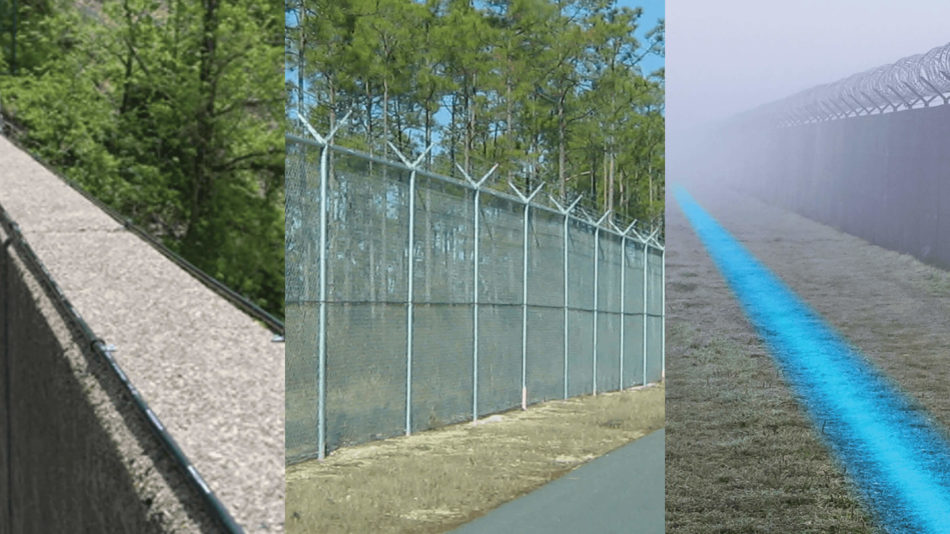The Ultimate Overview to Fiber Optic Protection Solutions for Your Company
In an era where safety problems are vital for businesses, recognizing the ins and outs of fiber optic modern technology can be transformative. This guide lays out how incorporating fiber optic safety systems not only enhances data defense yet likewise provides benefits like resistance to disturbance and real-time surveillance abilities.
Comprehending Fiber Optic Modern Technology

The core of a fiber optic cable television is composed of a thin glass or plastic facility, bordered by a cladding layer that reflects light back right into the core. Single-mode fibers are made for long-distance transmission, while multi-mode fibers are suitable for much shorter ranges, commonly utilized within buildings.
Fiber optics are not only quicker but also more safe than typical electrical wiring. Their inherent resistance to electro-magnetic disturbance and the difficulty of tapping into the signal without detection make them a recommended choice for organizations prioritizing data stability and security. As companies significantly count on safe and secure and reliable communication systems, recognizing fiber optic modern technology becomes important for notified decision-making.
Trick Benefits of Fiber Optic Security
When considering security alternatives for an organization, the benefits of fiber optic systems are specifically engaging. First and leading, fiber optic technology supplies exceptional information transmission rates and data transfer capacity, making it optimal for dealing with high-resolution video clip feeds from monitoring video cameras. This capacity guarantees that protection employees receive real-time information, enhancing total feedback times to possible protection threats.
Furthermore, fiber optic wires are naturally immune to electro-magnetic disturbance, which can compromise the honesty of traditional copper-based systems. This resistance makes sure that the information transmitted stays secure and nonstop, giving an extra dependable safety and security framework. Furthermore, fiber optics are less susceptible to physical damage, as they are made from glass instead of steel, decreasing maintenance costs and downtime.
An additional substantial advantage is the raised scalability of fiber optic systems. As service needs progress, fiber networks can be quickly broadened to suit additional security devices without substantial overhauls to the existing facilities. Lastly, fiber optic systems provide boosted cybersecurity functions, consisting of encryption capabilities that protect sensitive information from unapproved gain access to. Jointly, these benefits make fiber optic security systems a robust option for services looking for to boost their security steps.
Installment Process and Considerations
Considering the complexities included, the installment process of fiber optic safety systems needs cautious planning and implementation. The preliminary step involves an extensive website analysis to recognize ideal places for cabling and tools. This evaluation ought to think about environmental elements, existing facilities, and possible susceptabilities.

Furthermore, the setup should adhere to local building ordinance and sector requirements. This may include coordinating with different stakeholders such as structure supervisors, IT teams, and security employees to guarantee smooth combination with existing systems.
Post-installation, rigorous testing is required to confirm system efficiency and identify any kind page of problems that may emerge. By prioritizing these factors to consider during the setup procedure, companies can ensure a durable and efficient fiber optic protection system that fulfills their certain security requirements.
Newest Technologies in Fiber Optic Security
Recent advancements in fiber optic innovation have dramatically boosted the capabilities of protection systems for services. Among one of the most remarkable developments is the combination of fiber optic sensors that can discover resonances and intrusions along the perimeter of a facility. These sensors supply real-time monitoring, allowing quick response to potential violations.
Furthermore, the advancement of distributed fiber optic picking up modern technology enables the continuous monitoring of big locations with a single fiber wire. This method not only minimizes setup costs but also improves the dependability of keeping track of systems by getting rid of the requirement for several, different sensing units.
Moreover, advancements in multiplexing strategies have enabled companies to transfer substantial amounts of data over fiber optic networks, improving the abilities of video monitoring systems. High-definition video feeds can now be sent over fars away without loss of top quality, ensuring that security personnel have accessibility to clear and workable info.
Finally, making use of man-made knowledge (AI) in conjunction with fiber optic systems is changing hazard discovery. AI formulas can analyze data from fiber optic networks to determine uncommon patterns or habits, enabling for additional info positive safety and security measures. These advancements jointly represent a significant leap forward in fiber optic safety modern technology.
Picking the Right System for Your Organization
Choosing the proper fiber optic security system for your organization is critical for ensuring optimal defense and satisfaction. To make an educated choice, analyze your certain safety and security needs, taking into consideration aspects such as the size of your properties, the nature of your operations, and prospective susceptabilities.
Begin by examining the level of protection needed; as an example, risky environments might require innovative systems with integrated surveillance and breach detection capacities. Next, take into consideration scalability; as your company expands, your safety system should can broadening to suit enhanced needs without significant overhauls.
Furthermore, explore the integrity and performance of various systems. Search for carriers with recognized track records and customer endorsements that vouch for their solution top quality. It's likewise suggested to inquire concerning the technology's compatibility with existing facilities, ensuring over at this website a smooth combination process.
Conclusion
In final thought, fiber optic protection systems provide a durable solution for improving company protection infrastructures. The most current developments better bolster the efficiency of these systems, guaranteeing that organizations remain secure and versatile in an ever-evolving threat landscape.